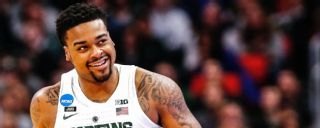|
Last month's NBA draft-withdrawal deadline solidified the landscape for the 2018-19 college basketball season. Some players might transfer. Others might suffer unfortunate injuries. Barring any serious development, however, the hierarchy for next season has taken shape. We're now left with questions about the teams in our Way-Too-Early Top 25: 1. Kansas: Is anything short of a national title a disappointment?  Since Bill Self arrived at Kansas, he has led the Jayhawks to three Final Four appearances, including one national title in 2008. The arrival of transfers Dedric Lawson and K.J. Lawson and a top-10 recruiting class should catapult the Jayhawks into one of the top spots in every preseason poll. But will Self win his first national title in a decade? That's the only real question for the Big 12 force that will seek its 15th consecutive conference title. Kansas is chasing only one goal in 2018-19.
2. Duke: How will Mike Krzyzewski use Zion Williamson?  The five-star recruit is an explosive (6-foot-6, 272 pounds) athlete who threatens to turn the 2018-19 season into his personal dunk contest. He can fly. His skill set seems limited, however, to fast-break acrobatics and dominance around the rim. With R.J. Barrett and Cam Reddish on the perimeter, it's unclear how Duke will implement Williamson into its offensive game and make sure he gets enough touches to make an impact.
3. Kentucky: Is Reid Travis coming? 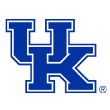 How many coaches could lose Hamidou Diallo, Jarred Vanderbilt, Wenyen Gabriel, Kevin Knox and Shai Gilgeous-Alexander and still start the 2018-19 season with a roster good enough to be a top-five preseason team? That's the norm with Kentucky. If Stanford transfer Travis (19.5 points, 8.7 rebounds per game) picks the Wildcats, John Calipari's squad could enter next season as the consensus No. 1 team in the country and the preseason favorite to win the national title.
4. Gonzaga: Will Rui Hachimura expand his game?  Gonzaga is still king of the West Coast Conference, with Killian Tillie, Zach Norvell Jr., Josh Perkins and Hachimura all returning. The most significant returnee within that group is Hachimura, a 6-foot-8 sophomore who made more than 60 percent of his shots last season and finished second on the team behind Tillie in offensive rating on KenPom.com. But he made just 19 percent of his 3-pointers. If he evolves into a reliable threat from the perimeter, he could lead Gonzaga to Mark Few's first national title.
5. Tennessee: Can the Vols lead from the front of the pack?  Last year, Rick Barnes' team was picked to finish 13th in a 14-team SEC in a preseason media poll. The Vols shared the conference title with Auburn, exceeding expectations and silencing their doubters. With Grant Williams and Admiral Schofield returning, the Vols could tussle with Kentucky for the league crown again and make a run in March. Sometimes, however, teams struggle with increased expectations. Last season, they were the underdogs. Now, the Vols will start the season with pressure they could not have imagined a year ago.
6. Nevada: Will they defend anyone?  You could make a case that Nevada deserves a higher spot in this poll, and you wouldn't sound crazy. The team that finished with the No. 7 offensive rating and lowest turnover rate on KenPom.com brings back Caleb Martin, Cody Martin and Jordan Caroline while adding McDonald's All American Jordan Brown. But Nevada also allowed Loyola-Chicago to shoot 75 percent from the field in the second half of a Sweet 16 loss and failed to crack the top 100 in KenPom.com's defensive ratings last season. The Wolf Pack won't reach their potential without better defense.
7. Virginia: How will Virginia respond to a historic defeat?  For Virginia's critics, the Cavaliers' loss to UMBC -- the first time a No. 1 seed lost to a 16-seed in the NCAA tournament -- was an "I told you so" moment. Under Tony Bennett, the Cavs have enjoyed a run as one of America's most successful programs. Their offensive meltdowns in the postseason continue, however, to make observers skeptical of their ceiling. With De'Andre Hunter back, maybe 2018-19 will end with the Cavs properly capping another strong season. That's the only way to make folks forget about the UMBC loss.
8. North Carolina: Is Roy Williams going to play more small ball? 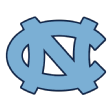 North Carolina usually dominates the offensive glass with a bulky lineup. But last season, Williams frequently used a lineup in ACC play that did not feature a traditional big man or a player taller than 6-foot-8. That group was outrebounded 50-36 in a 21-point loss to Texas A&M in the NCAA tournament. Yet Luke Maye, Cameron Johnson and freshman Nassir Little, three players who can stretch the floor, could anchor a Tar Heels team that plays small ball the entire 2018-19 season. It would be atypical for Williams, but he has the personnel to succeed with the scheme.
9. Michigan State: What kind of player can Nick Ward become?  In 2017-18, Ward led the country in offensive-rebounding rate and made 65 percent of his shots inside the arc. He did that while surrounded by projected lottery picks Miles Bridges and Jaren Jackson Jr. It's Ward's show now. Last season, he had dominant moments, such as his 19-point effort in 18 minutes against Duke in the Champions Classic. But he also had problems against athletic big men. If the player who withdrew from the NBA draft wants to make money at that level and lead Michigan State to another Big Ten title, he'll have to deliver against elite competition as the center of Tom Izzo's team.
10. Villanova: Is Villanova's success based more on its talent or system?  Few teams could lose their top four scorers after a national championship run -- a group that includes the Wooden Award winner and four potential first-round picks -- and still secure a place within the top 10. But Jay Wright has been here before, doubted and undermanned after a title run. With Eric Paschall and Phil Booth locked in as the only key contributors returning this season, Wright will face a difficult task. But his history suggests he'll cobble together another dangerous team and elevate new stars.
11. Auburn: Can Jared Harper carry a heavier load? 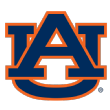 Mustapha Heron, who led the team with 16.4 PPG last season, transferred to St. John's, but Auburn remains a strong team capable of defending the SEC crown it shared with Tennessee last season. Still, Bruce Pearl has publicized his concerns about the team's point-guard depth, with highly capable backup Davion Mitchell having transferred to Baylor. Harper (13.2 PPG, 5.4 RPG) is a capable distributor, but the Tigers maintained their top-30 offense with Mitchell on the floor last season. Now he's gone. That could be a problem.
12. Kansas State: Can a healthy K-State upset Kansas in the Big 12?  Dean Wade missed three games in the NCAA tournament, including Kansas State's victory over Kentucky in the Sweet 16, due to injury and played just eight minutes in a loss to Loyola-Chicago in the Elite Eight. The Wildcats are not only healthy and backed by Wade and Barry Brown, but they also might become the team rival Kansas must go through to secure another Big 12 title. That's why this season's Big 12 race might be the most interesting in years.
13. West Virginia: What's next without Jevon Carter?  In Carter's four years with the program, West Virginia never finished lower than second in turnovers forced per possession. College basketball's best on-ball defender turned the Mountaineers into defensive tyrants. Before his arrival, they'd finished outside the top 100 in defensive efficiency on KenPom.com. Yes, coach Bob Huggins has Esa Ahmad, Lamont West and Sagaba Konate returning to form a talented nucleus. Carter did everything, though. West Virginia must plow ahead without its defensive force, who left a void the Mountaineers will struggle to fill.
14. Virginia Tech: Can the Hokies crack the top tier of the ACC?  Buzz Williams finished the 2017-18 season with 21 wins, a tally that included victories over Virginia, Duke and North Carolina. But early exits in both the ACC and NCAA tournaments demonstrated the shortcoming that stopped Virginia Tech from evolving into an ACC power: offensive rebounding. Justin Robinson & Co. have to prove that their best wins last season weren't flukes by becoming a tougher team around the rim.
15. Oregon: Will Bol Bol carry Oregon to the top of the Pac-12?  The Pac-12 is a mysterious league this season. Multiple teams, most led by young anchors, could win the conference title. The most intriguing figure in the race is Oregon's Bol, son of former NBA player Manute Bol. He has his father's length -- he's 7-foot-2; his father was 7-foot-7 -- and he has ridiculous athleticism and the ability to run the floor, block shots and connect from 15 feet. He's a special athlete, one who might be the difference-maker in the Pac-12 race.
16. Syracuse: How much can we trust Jim Boeheim's offense?  The good news for Syracuse is Tyus Battle, Frank Howard and Oshae Brissett -- the trio that led the Orange to a surprising Sweet 16 run -- are back. The problem? The Orange failed to score more than 60 points in seven of their 14 losses last season. Boeheim will have more shooters this season, but there are no guarantees he'll solve the offensive woes that left this team on the bubble last season.
17. Michigan: Is Ignas Brazdeikis the real deal?  In the World Team's win over Team USA in the Nike Hoop Summit in April, incoming Michigan freshman Brazdeikis -- a four-star recruit from Canada -- scored nine points, grabbed four rebounds and collected three assists. His development is connected to Michigan holding onto this preseason ranking after losing Mo Wagner to the NBA. Coach John Beilein's system is perfect for Brazdeikis, a 6-foot-8 small forward who can stretch the floor for the Wolverines. They need him to contribute early.
18. Florida State: What is the ceiling for FSU? 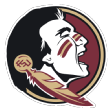 Mark Few said Leonard Hamilton's team gave his squad so many problems in the Sweet 16 because Florida State boasts the athletes to switch every defensive assignment without complications. Terance Mann is among several key contributors from last season's Elite Eight team to return, but it's difficult to separate that NCAA tournament run (with victories over Missouri, Xavier and Gonzaga) from the team that failed to showcase the same edge against midlevel ACC opponents. Florida State could compete in and even win the ACC. Yet FSU squads with the same assets have fallen short of expectations in the past.
19. Loyola-Chicago: Is the depth there for another deep tourney run?  Wichita State won 35 games the season after it reached the 2013 Final Four. Can Loyola-Chicago have a similar encore, or will it come back to earth following last season's Final Four run? Clayton Custer leads a team that proved it could defend and shoot with the best in the country during the NCAA tournament. The Ramblers could rack up wins in the Missouri Valley Conference race and enter the postseason as dangerous opponents again. The Ramblers lost much of their depth from last season's team, as Donte Ingram, Aundre Jackson and Ben Richardson were seniors. A thin rotation could derail Loyola-Chicago's dreams of another magical run.
20. Clemson: Can Tigers cut down on turnovers?  Clemson did not generate much buzz before the NCAA tournament. But its 84-53 win over Auburn in the second round changed perceptions about this program and its standing in next season's ACC race. In order to be a contender, however, Clemson needs to limit its turnovers. During a three-game losing streak in ACC play, the Tigers committed 45 turnovers. With turnovers on 17.8 percent of their possessions in conference play, per KenPom.com, they finished 10th in the league. Four of their top five scorers are back this season, but the Tigers must address ballhandling challenges to consistently compete with the league's best.
21. LSU: Could Tremont Waters be the breakout star of 2018-19?  Waters didn't get the hype many of his fellow freshmen did, but his numbers -- 15.9 PPG, 6.0 APG, 2.0 SPG, 80 percent from the free throw line -- stand out among a class that includes many NBA draft lottery picks. Don't be surprised if Waters and Will Wade's elite freshman class vie for the SEC title. Waters could emerge as a star this season.
22. Mississippi State: Can MSU compete without 3-point shooters? 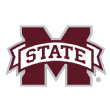 Mississippi State defeated Baylor, Louisville and Nebraska in the NIT. When they lost to Penn State in the semifinals, the Bulldogs finished 3-for-15 from the 3-point line, while the Nittany Lions made 55 percent of their attempts. Ben Howland's team (31.5 percent) was one of the worst 3-point shooting teams in the nation last season. Even with its best players returning, Mississippi State has no guarantee of improvement unless it becomes a more versatile offensive team and a threat from the perimeter.
23. TCU: Will Jaylen Fisher get and stay healthy? 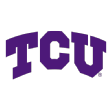 TCU looked like a clear tournament team until Fisher's knee injury, his second of the season, shut him down in January. The Horned Frogs finished 8-8 in their final 16 games without him. Fisher is expected to make a full recovery from the surgery to repair his torn meniscus. Jamie Dixon needs him to be healthy. Dixon's squad averaged 1.25 points per possession with Fisher on the floor, per hooplens.com. His health is the only question about this team entering the season.
24. Butler: What kind of impact will Jordan Tucker make?  In 2017, Duke landed top-100 wing Tucker, who picked the Blue Devils over Syracuse. Midway through his first season, however, he decided to transfer to Butler after playing just 14 minutes for Krzyzewski. The White Plains, New York, native will be eligible in December, just as the Bulldogs prepare for Big East play. This could be a pivotal midseason addition that affects the conference race if he's successful in his first season with his new team.
25. Purdue: Can Matt Haarms develop into a scoring threat?  Carsen Edwards recently told ESPN that Haarms, the 7-foot-3 center who averaged 4.8 PPG last season, did not get the opportunity to unveil his offensive gifts in 2017-18. With Isaac Haas gone, however, Haarms will become the go-to post player for Matt Painter, who has a history of thriving off talented big men. Edwards is an All-America candidate. If Haarms grows into a threat, Purdue could possess a potent inside-outside combination.
|


